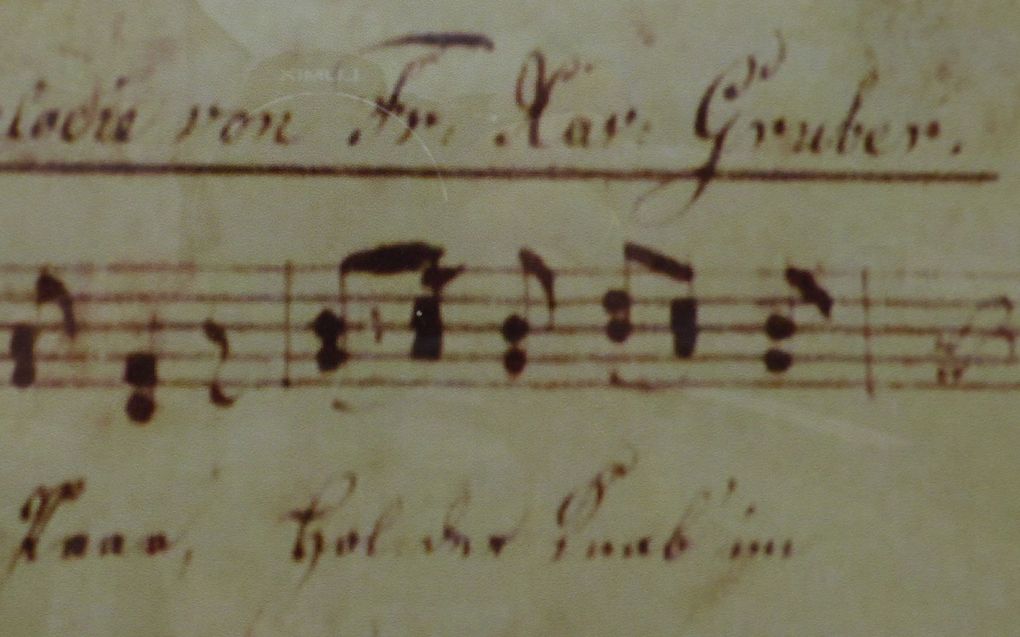The ‘father’ of Silent Night died 175 years ago

An old copy of the hymn Silent Night. Photo Wikimedia Commons
Central Europe
Silent Night may very well be the best-known Christmas carol in the world. Some say it has been translated into almost 300 languages. This year, it has been 175 years since its composer passed away. Strange fact: he is buried without his head.
Joseph Mohr is the Austrian composer behind "Silent Night", originally titled "Stille Nacht" in German. He never lived to see his carol become so famous. On December 4, 1848, he died penniless, Katholisch.de reports. He was buried in the cemetery of St. Rupert Church in Wagrain in Salzburg, Austria. However, the story goes that his head was lost for some good 90 years.
The composer of Silent Night was born in 1792 in an unstable family in Salzburg. His mother, Anna Schoiberin, had already had three illegitimate children. Mohr's father, Franz Mohr, had disappeared six months before the boy was born.
Singing
Nothing much is known about Mohr's early childhood, historian Dietlinde Hlavac writes in a biography on him. However, despite his poor background, the boy found a supporter in Vicar Johann Nepomuk Hiernle, the Stille Nacht Museum writes on its website. The latter enabled him to study to become a priest while earning money by playing an instrument and singing.
At the age of 23, Mohr became a priest in the Roman Catholic Church in Ramsau, a German town where he had already served as an assistant priest. The same year, he was transferred to the Austrian parish of Mariapfarr.
It is said that this is where he wrote the carol Silent Night in 1816. The carol was presented for the first time at a Christmas mass in the town of Oberndorf, where Mohr had moved for health reasons. Mohr's text was set to a melody of his friend and church organist Franz Xaver Gruber. According to Katholisch.de, Gruber sang the bass to the song and Mohr the tenor. A guitar accompanied them. At the time, the carol consisted of six verses.
Funeral
Mohr lived till December 4, 1848. He died of lung paralysis when he was 56 years old. During his life, the priest had not gained much wealth. He left so little behind that his funeral could hardly be paid for, as he gave away his income and invested in a local school.
And even though his legacy of Silent Night is great, no one really knows what Mohr himself really looked like. That is where the story of the disappearance of his head comes in.
As the community of Oberndorf, where Silent Night was performed first, prepared for celebrations of the anniversary of the song in 1913-1914, they decided to put a sculpted plaque next to the church, Door county pulse reports.
However, the problem was that no one could exactly remember what Mohr had looked like. During his life, he had refused any portraits of him. The sculptor and pastor Josef Mühlbacher, therefore, had Mohr's skull exhumed and took it with him to Vienna, where a forensic artist produced a replica of what he would have looked like, Find a Grave states.
Skull
What happened with the skull after that remains a bit unclear. It seems that it has never returned to Wagrain, where Mohr's body was buried. Some believe it stayed in Oberndorf in the house of the police constable. In 1928, a skull was declared to be the head of Mohr. It was, therefore, stored in the "Silent Night" memorial chapel as some sort of relic.
However, it has never been verified whether the skull was really from Mohr, and his actual body is still buried in Wagrain without a head.
Related Articles









